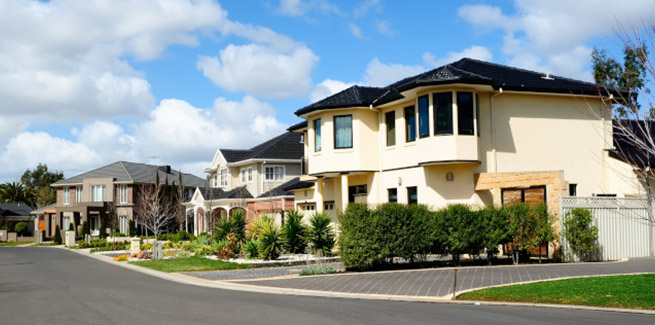Building Approvals data released by the Australian Bureau of Statistics (ABS) for the month of November 2020 revealed that private sector house approvals rose for the fifth consecutive month, and were at the highest recorded level (seasonally adjusted) since December 1999.
The trend has been attributed to a range of factors including government stimulus measures and low interest rates.
Approvals for private houses rose 6.1 per cent in seasonally adjusted terms to 11,489 over November 2020.
Between November 2019 and November 2020, private sector house approvals jumped by 33.6 per cent.
The increase in private sector houses in November was driven by strength in Queensland and South Australia, ABS figures showed.
Queensland recorded a 17.0 per cent spike in private sector house approvals over November 2020 to 2,455, while Western Australia recorded a 7.5 per cent rise to 1,988, South Australia recorded a 2.8 per cent rise to 842, Victoria recorded a 1.5 per cent rise to 3,480 and NSW posted a small increase of 0.7 per cent to 2,296.
Total dwelling approvals climbed by 18.8 per cent in South Australia to 1,120, 6.5 per cent in Queensland to 3,248, and 1.5 per cent in NSW to 4,834.
However, Western Australia recorded a decline of 5.4 per cent to 2,294, while Victoria recorded a 4.6 per cent fall to 4,838, and Tasmanian approval rates fell by 0.4 per cent to 280.
The seasonally adjusted estimate for total dwellings approved rose by 2.6 per cent in November 2020 to 17,205, and rose by 15 per cent between November 2019 and November 2020.
On the other hand, private sector dwellings approval levels excluding houses remained soft, falling 3.9 per cent to 5,377 over November, while it has fallen by 13.0 per cent between November 2019 and November 2020.
The value of total buildings approved tumbled by 8.4 per cent in November to $10 billion, driven by a sharp decline in non-residential building approvals, which plummeted by 27.4 per cent in November to $3.4 billion, after rising by 59.3 per cent in October.
Total residential building approvals rose 5.7 per cent to $6.7 billion over November 2020, driven by new residential building, which rose by 5.7 per cent to $5.8 billion, while alterations and additions to residential building reached an all-time high, rising by 5.6 per cent to $857.2 million.
Commenting on the figures, ABS director of construction Daniel Rossi said: “Approvals for private houses have surged 40 per cent since June. Federal and state housing stimulus measures and low interest rates have resulted in strong demand for detached dwellings.”
Strong detached housing numbers to continue
Housing Industry Association economist Angela Lillicrap concurred with this analysis, stating that while the federal government’s HomeBuilder scheme significantly boosted consumer confidence in the housing market, several factors have contributed to the strength of detached building approvals including low interest rates.
“Detached house approvals increased by 24.8 per cent in the three months to November 2020 compared to the preceding three months and are 31.4 per cent higher than the same time last year,” Ms Lillicrap said.
“HIA New Home Sales data suggests that detached house building approvals will continue to be strong over the coming months. The extension of HomeBuilder at the end of November is not a factor in this month’s result but will see the strength in detached house approvals extend into 2021.”
The HIA singled out the Northern Territory for posting the strongest growth in detached house approvals over the last three months, jumping by 114.0 per cent in original terms, which is double the same time last year.
“It is important to note that this improvement is from very low levels of activity a year ago,” Ms Lillicrap said.
However, in original terms the ACT declined by 25.9 per cent.
The HIA said that in seasonally adjusted terms, the number of detached dwelling approvals during the three months to November 2020 compared to the same time last year increased the most in Western Australia (89.1 per cent), followed by Queensland (27.8 per cent), NSW (24.5 per cent), Victoria (24.3 per cent), Tasmania (22.7 per cent), and South Australia (18.7 per cent).
Multi-unit approvals remain subdued
Conversely, according to Ms Lillicrap, multi-unit approvals have not recorded the “same boom” as the detached market, with multi-unit approvals remaining 9.7 per cent lower in the three months to November 2020, compared with the same time a year earlier.
Commenting further on this trend, Ms Lillicrap said: “The multi-unit projects that gained approval in November likely commenced the planning and building approval process years ago.
“The apartment market is likely to be constrained going into 2021 due to slower population growth and a stronger preference for detached houses.”
The number of multi-unit approvals declined by 81.9 per cent in Tasmania in the three months to November 2020, while it also declined in South Australia (51.0 per cent), Queensland (18.4 per cent), Victoria (11.3 per cent), and NSW (3.4 per cent).
However, multi-unit approvals increased by 111.5 per cent in Western Australia.
In original terms, they increased by 90 per cent in the Northern Territory and declined by 25.9 per cent in the ACT.
[Related: Detached housing ‘reaching a decade high’]
 ;
;
